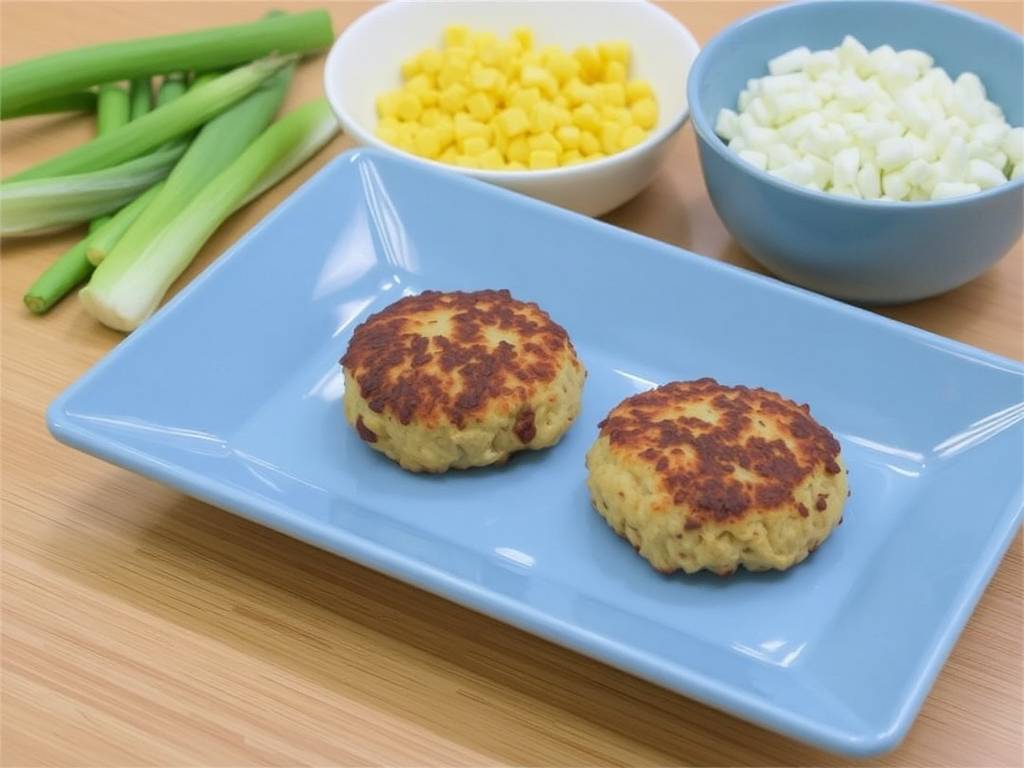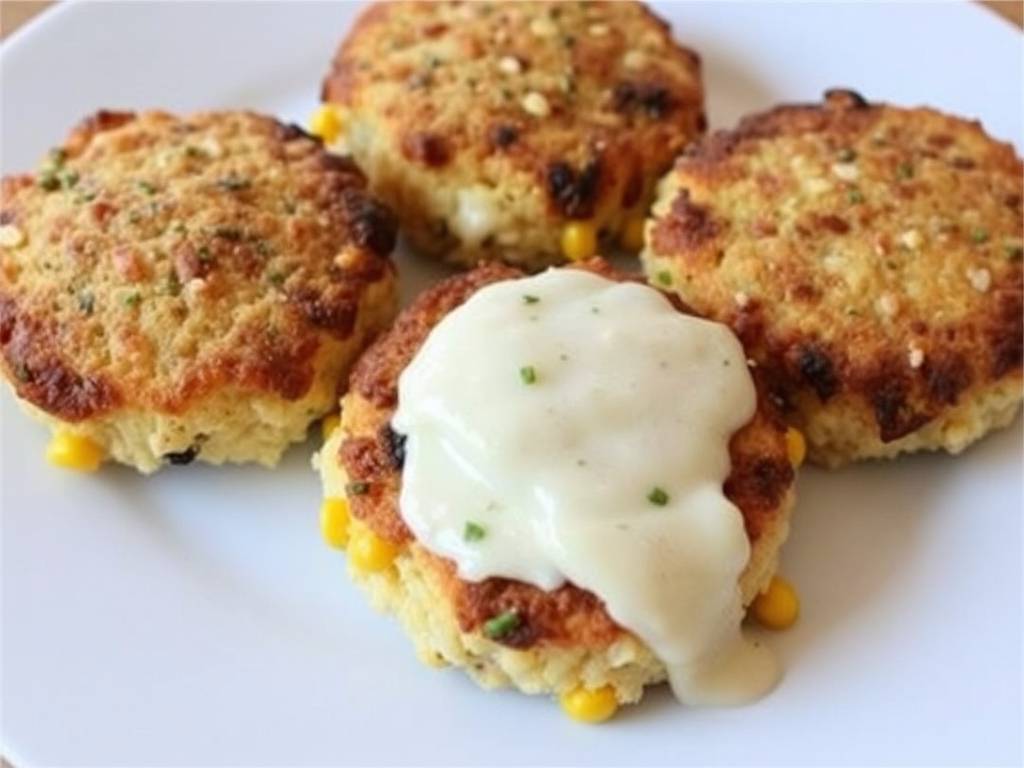The Ultimate Guide to Crafting Perfect Crab Cakes with Sweet Corn and Onion
There's something truly special about a perfectly crafted crab cake. It’s a dish that speaks of coastal breezes, summer gatherings, and culinary elegance, yet it remains wonderfully approachable. The star, of course, is the crab—sweet, tender, and delicate. But when you introduce the sweet pop of corn and the gentle, aromatic bite of onion, you elevate this classic to a whole new level of deliciousness. If you've ever been intimidated by the thought of making crab cakes from scratch, fear not. This comprehensive guide will walk you through every single step, ensuring you create restaurant-quality crab cakes with corn and onion right in your own kitchen.
Let's start by talking about the heart of the matter: the ingredients. The secret to an incredible crab cake lies in the quality and balance of its components. You want to taste the crab first and foremost, with the other ingredients playing a harmonious supporting role.

The Essential Ingredients for Perfect Crab Cakes:
- The Crab: This is non-negotiable. For the best flavor and texture, seek out fresh lump crab meat or jumbo lump crab meat. It’s more expensive, but it makes all the difference. The large, succulent pieces are what give a great crab cake its signature texture. If fresh isn't available, high-quality pasteurized crab meat in a can or tub is a good alternative. Avoid the finely shredded "flake" style for this recipe, as it can become mushy. This is the most crucial step in learning how to select the best crab meat for crab cakes.
- The Fresh Corn: Using fresh sweet corn, cut right off the cob, will add a wonderful burst of sweetness and a slight crunch. You can use frozen or canned corn in a pinch, but be sure to thaw and drain it thoroughly. The moisture is the enemy of a good crab cake!
- The Onion: We’ll use a finely diced yellow or sweet onion. The key here is to sauté it gently until it's soft and translucent. This step, sautéing onions for crab cake recipes, is vital. Raw onion can be too harsh and overpower the delicate crab, while cooked onion melts into the mixture, providing a subtle, savory-sweet foundation.
- The Binder: This is what holds your crab cakes together without turning them into a paste. We'll use a combination of panko breadcrumbs and a little mayonnaise. Panko is lighter and airier than traditional breadcrumbs, resulting in a less dense final product. An egg also helps to bind everything.
- The Flavor Enhancers: This is where you can get creative. We'll use classic ingredients like Dijon mustard, Worcestershire sauce, a squeeze of fresh lemon juice, and fresh herbs like parsley or chives. Old Bay seasoning is a classic for a reason, but feel free to use a pinch of paprika and cayenne if you prefer.
Step-by-Step Instructions for Making Crab Cakes:
-
Prepare Your Ingredients: Start by finely dicing your onion. Shuck your corn and use a knife to slice the kernels off the cob. Pick through your crab meat gently with your fingers to remove any small pieces of shell or cartilage, being careful not to break up the large lumps.
-
Sauté the Aromatics: In a small skillet over medium heat, melt a tablespoon of butter or heat a tablespoon of olive oil. Add the diced onion and cook for 4-5 minutes until it's soft and fragrant. Then, add the corn kernels and cook for another 2-3 minutes, just to take the raw edge off. Let this mixture cool completely. This is a critical tip for preventing soggy crab cakes—adding hot vegetables to the crab mixture will start to cook the crab and create steam, leading to a fall-apart cake.
-
Create the Flavor Base: In a large mixing bowl, combine the mayonnaise, Dijon mustard, Worcestershire sauce, lemon juice, egg, and your chosen seasonings. Whisk this together until it's smooth and well-combined.
-
The Gentle Combine: Now for the most important step. Add the cooled onion and corn mixture to the bowl. Then, gently fold in the panko breadcrumbs. Finally, add the beautiful lump crab meat. Using a rubber spatula or your hands (with a light touch!), gently fold everything together. You want to just incorporate the ingredients, not mash them. Overmixing is the number one mistake people make. The mixture will be moist but should hold together when you press it gently.
-
Chill to Firm Up: Cover the bowl with plastic wrap and refrigerate for at least 30 minutes, or up to an hour. This essential chilling step for crab cake mixture allows the breadcrumbs to absorb moisture and the whole mixture to firm up, making it infinitely easier to form into cakes that won't fall apart in the pan.
-
Form the Cakes: Once chilled, use your hands to form the mixture into evenly-sized patties. A half-cup measure is a great tool for consistency. You should get about 6-8 good-sized crab cakes. Press them firmly but gently so they hold their shape.
Cooking Your Crab Cakes to Golden Perfection:
You have two excellent options for cooking, each with its own merits.
-
Pan-Frying for a Crispy Crust: This is the classic method. Heat a generous layer of a neutral oil (like canola or vegetable) mixed with a pat of butter in a large skillet, preferably cast-iron, over medium heat. The butter will add flavor and help with browning. Once the oil is shimmering, carefully add the crab cakes. Don't overcrowd the pan. Cook for 3-4 minutes per side, until they are a deep, golden brown and crispy. This method gives you that irresistible textural contrast.
-
Baking for a Lighter Option: For a less oily but still delicious result, baking is fantastic. Preheat your oven to 400°F (200°C). Place the formed crab cakes on a baking sheet lined with parchment paper. Brush the tops lightly with melted butter or olive oil. Bake for 12-15 minutes, then flip them and bake for another 5-10 minutes, until golden brown and heated through. This is a great easy baked crab cake method for when you're feeding a crowd.
Serving and Pairing Suggestions:
Serve your golden-brown crab cakes immediately. A simple wedge of lemon is a must for squeezing over the top. For sauces, a classic remoulade sauce for crab cakes is divine, or a simple aioli (flavored mayonnaise). A tangy tartar sauce also works beautifully.
For sides, consider what complements the sweet, savory, and rich flavors. A fresh arugula salad with a lemon vinaigrette cuts through the richness perfectly. Creamy coleslaw, roasted asparagus, or crispy french fries are all crowd-pleasing choices.
Troubleshooting Common Crab Cake Issues:
- My crab cakes are falling apart! This usually means the binder wasn't sufficient, the mixture was overmixed, or it wasn't chilled long enough. Ensure you use the egg and panko, handle the mixture gently, and never skip the fridge time.
- They're too mushy on the inside. This is often due to excess moisture. Make sure your sautéed corn and onions are completely cooled and that you've drained your crab meat well if it was packed in liquid.
- They're not browning on the outside. Ensure your oil is hot enough before adding the cakes. If the oil isn't shimmering, the cakes will soak it up instead of searing. Also, don't move them around in the pan; let them develop a crust before flipping.
Making crab cakes with corn and onion is a rewarding culinary project. By focusing on quality ingredients, a gentle hand, and a little patience, you can create a dish that is sure to impress. So, roll up your sleeves, be kind to your crab meat, and get ready to enjoy one of the most satisfying seafood experiences you can have at home. Happy cooking







发表评论